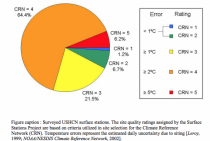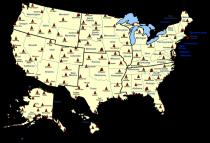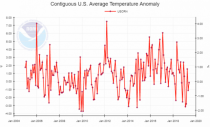Joseph D’Aleo, CCM
The U.S. Climate Reference Network (USCRN) is a systematic and sustained network of climate monitoring stations with sites across the conterminous U.S., Alaska, and Hawaii. These stations use high-quality instruments to measure temperature, precipitation, wind speed, soil conditions, and more. Information is available on what is measured and the USCRN station instruments.
The vision of the USCRN program is to provide a continuous (more accurate) series of climate observations for monitoring trends in the nation’s climate and supporting climate-impact research.
The Surface Stations project found over 90% of long term stations had siting issues that would produce a warm bias of >= 1C. UHI was also a factor.

USHCN surveyed 7-14-09 Enlarged.
According to GAO’s survey of weather forecast offices, about 42 percent of the active stations in 2010 did not meet one or more of the siting standards and were especially egregious and required changes. They did not consider UHI.

The CRN was established based on the work of John Christy. Tom Karl tried to get funding for a complete network but was told by NOAA, the satellites were the future and they refused to fund the complete replacement though some additions were made. The current network has 137 stations (up from 114). By definition they provide proper siting and are not UHI contaminated.
Here is the CRN network today:
Here is a plot of monthly average anomalies since 2004 in CRN. Hmmm.





